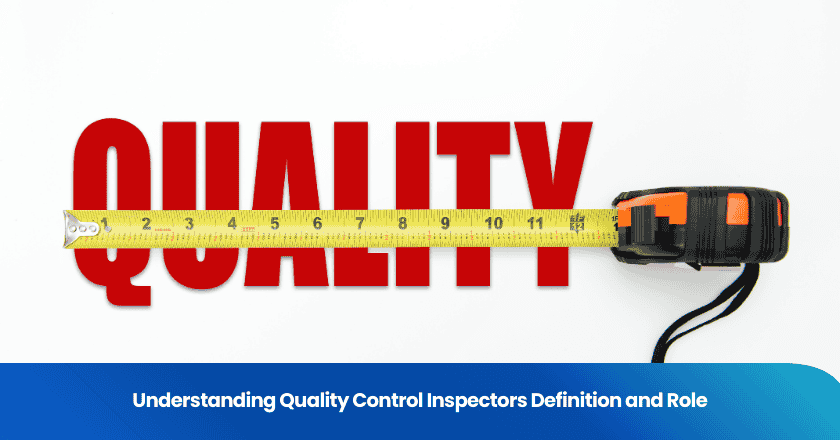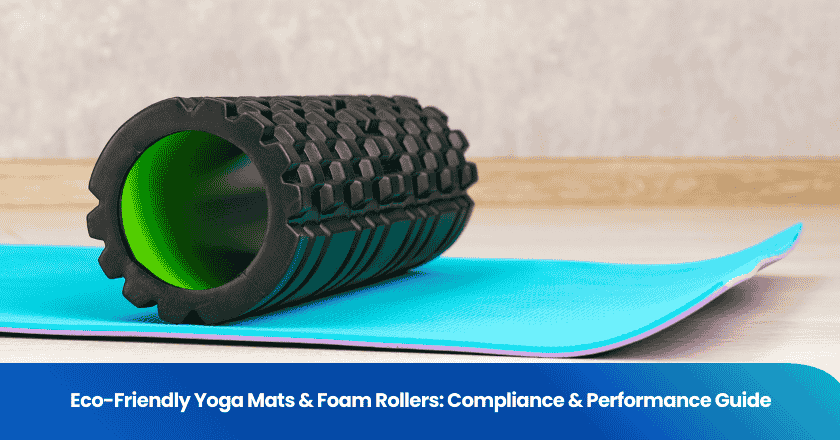
A quality control inspector helps you maintain high quality standards throughout production. You monitor products to ensure safety, consistency, and compliance with regulations. Your work reduces the risk of defects, protects consumer health, and supports business success. Quality control inspectors play a vital role in industries such as automotive manufacturing, electronics, pharmaceuticals, and food production. The responsibilities you handle directly impact product quality and customer satisfaction.
Key Takeaways
- Quality control inspectors ensure products meet safety and quality standards, protecting consumer health and supporting business success.
- Inspectors use various methods, such as visual checks and statistical process control, to identify defects and maintain high quality throughout production.
- Accurate documentation of inspection results is crucial for continuous improvement and regulatory compliance, helping companies track trends and address issues.
- Attention to detail is essential for quality control inspectors, as it helps catch defects early and maintain product reliability and customer satisfaction.
- A career in quality control can start with a high school diploma, but gaining experience and certifications enhances qualifications and career growth.
Quality Control Inspectors Overview
Definition
You serve as a quality control inspector when you monitor and evaluate products throughout the manufacturing process. Your main responsibility is to ensure that every item meets strict quality standards and specifications. You use inspection processes to identify defects and non-conformities. Your feedback helps improve production methods and prevents costly recalls. Quality control inspectors play a critical role in maintaining product quality and protecting consumer safety. You work in various industries, including automotive, electronics, pharmaceuticals, and food production. Your expertise supports compliance with industry standards and regulatory requirements.
Note: Quality control inspectors contribute to continuous improvement by providing valuable insights that help manufacturers refine their processes and achieve higher quality standards.
Role in Production
You take on several tasks as a quality control professional in a production environment. Your daily activities focus on maintaining quality and ensuring products meet all required standards. Here is how you contribute:
1. You inspect raw materials, in-process goods, and finished products for defects using visual checks and precise measurement tools.
2. You document inspection results, noting any discrepancies or non-conformance, and provide detailed reports to improve processes.
3. You ensure compliance with industry standards, safety regulations, and specifications to prevent errors or delays.
4. You collaborate with production teams to identify potential quality issues early in the manufacturing process.
5. You maintain and calibrate quality control equipment for accurate measurements.
6. You implement corrective actions to improve product quality and prevent future defects.
Your role in quality control involves testing, monitoring, and reporting. You help maintain high quality standards and support quality assurance efforts. You ensure that products meet specifications and regulatory requirements. Your attention to detail and commitment to quality make you an essential part of the production process. You help companies deliver safe, reliable products that meet customer expectations.
Importance of Quality Control Inspectors
Ensuring Product Safety
You play a critical role in protecting consumers by preventing defective products from reaching the market. Quality control inspectors use robust testing and systematic checks to identify risks at every stage of production. You verify compliance with safety and quality standards through regular inspections. In industries such as food and pharmaceuticals, you perform microbiological, chemical, and physical testing to detect contaminants. You monitor critical parameters like temperature and pH to maintain process control. Your proactive approach helps identify hazards before they become serious issues. You examine ingredients, packaging, and final products for contamination or defects. This process prevents foodborne illnesses and ensures medications remain safe and effective. You inspect production facilities and review drug formulations, verifying labeling accuracy to protect public health.
You help companies avoid costly recalls and protect their reputation by ensuring only products that meet strict quality standards reach consumers.
- Systematic checks ensure food products meet established safety and quality standards.
- Inspections identify and mitigate potential hazards in the supply chain.
- Continuous monitoring supports compliance with safety regulations and specifications.
Maintaining Standards
You uphold industry standards and specifications by ensuring every product meets defined requirements. Quality control professionals use advanced measurement tools and inspection methods to maintain consistency. In automotive manufacturing, you apply international standards to guarantee product reliability and safety.
You support business success by minimizing costs related to rework and waste. Quality control ensures consistent production and compliance with safety regulations. You help companies build trust with consumers by delivering products that meet expectations. Your work aligns with quality assurance efforts, driving continuous improvement and supporting customer satisfaction.
- Product inspection ensures mass-produced goods satisfy quality requirements.
- Preventing errors and defects reduces costs and supports business growth.
- Comprehensive testing evaluates products for hazards and ensures safety compliance.
Quality Control Inspector Responsibilities
Inspection and Testing
You play a central role in the quality control process by performing thorough inspection and testing of manufactured goods. Your work ensures that every product meets required specifications and production standards. You use a variety of methods to evaluate quality at different stages of production.
You select the appropriate inspection and testing method based on the product type and industry requirements. Visual inspection helps you catch surface flaws quickly. Dimensional inspection ensures that parts fit together correctly. Functional testing confirms that products operate as designed. Sampling techniques allow you to check batches efficiently, while statistical process control helps you maintain consistent quality. Automated testing increases speed and accuracy, especially for repetitive tasks. Root cause analysis helps you solve recurring problems and improve future production.
Technological advancements have changed your responsibilities in the quality control field. Automation and AI now support faster and more precise inspections. IoT devices give you real-time data on production conditions. Blockchain technology helps you track products through the supply chain, ensuring traceability and accountability. These tools help you maintain high quality standards and adapt to new challenges in modern manufacturing.
Defect Identification
You must identify and classify defects to prevent defective goods from reaching customers. Your attention to detail allows you to spot issues early and take corrective action. In electronics manufacturing, you often encounter several types of defects:
| Defect Type | Examples of Defects |
|---|---|
| Assembly Defects | Misaligned Components, Missing Fasteners, Incorrectly Installed Parts |
| Process-Related Defects | Inconsistent Production Speeds, Equipment Malfunctions, Poorly Calibrated Machines |
| Surface Defects | Particle Defects, Patterning Defects, Coating Defects |
| Dimensional Defects | Minor variations leading to misalignment or nonfunctional assemblies |
You use your expertise to distinguish between minor and critical defects. Assembly defects can cause products to fail or become unsafe. Process-related defects often signal deeper issues in the production line. Surface defects may affect appearance or function. Dimensional defects can lead to parts that do not fit or work properly. By identifying these problems, you help maintain quality and prevent costly recalls.
You face significant challenges in defect identification. You must maintain consistent quality across global supply chains and keep up with evolving regulatory compliance standards. You balance cost-efficiency with quality requirements and manage advanced technology. Consumer expectations for quality and transparency continue to rise, making your role even more important.
Tip: Early defect identification reduces waste, saves costs, and protects your company's reputation.
Reporting and Documentation
You document and report your findings to management and other teams. Accurate reporting is essential for continuous improvement and regulatory compliance. Your reports provide a clear record of quality control activities and support decision-making.
1. When you receive raw materials or components, you document whether supplied goods meet specifications.
2. During production, you perform in-process checks and record any issues you find.
3. You complete a final inspection report to confirm that finished products meet quality standards before release.
4. If customers return products or file complaints, you use your reports to analyze defects and recommend corrective actions.
5. You evaluate suppliers by reviewing quality consistency in your documentation.
6. You prepare reports for regulatory compliance, ensuring your company meets legal requirements.
Your documentation helps you track trends, identify recurring problems, and support quality assurance efforts. You use your reports to communicate with production teams, management, and external auditors. Clear and thorough documentation strengthens your company’s commitment to quality and builds trust with customers.
Note: Effective reporting and documentation are key to maintaining high production standards and meeting industry regulations.
Skills and Qualifications for Quality Control
Technical Skills
You need strong technical skills to succeed in quality control. In the aerospace industry, you examine components during production and use inspection techniques to identify defects. You rely on measurement tools and testing equipment to ensure every part meets industry standards. Your responsibilities often include understanding regulations, such as 14 CFR Part 145 and 121 operations, and holding certifications like the FAA A&P certificate. You benefit from experience in aviation maintenance and familiarity with different aircraft types. You also use document control systems and must be proficient with MS Office products. Your organizational and communication skills help you manage quality control tasks efficiently. These technical abilities allow you to maintain high quality and support quality assurance efforts across industries.
- Knowledge of inspection techniques and measurement tools
- Understanding of regulatory requirements
- Experience with document control and reporting
- Proficiency in digital tools for data management
Attention to Detail
You must pay close attention to detail in every aspect of quality control. Your careful inspections ensure products meet established quality standards before reaching consumers. You follow strict protocols and adapt to evolving standards. Your meticulous work protects your company’s reputation and ensures customer satisfaction. You verify that each product matches specifications and identify even minor defects. This level of focus is essential for maintaining quality and supporting continuous improvement.
Your attention to detail in quality control builds trust with customers and strengthens your company’s credibility.
- You verify products meet standards.
- You maintain brand credibility.
- You adjust to new quality requirements.
Certification
You also enhance your qualifications with recognized certifications. Internationally, you can pursue ISO 9001 Lead Auditor, Six Sigma (Green or Black Belt), Certified Quality Engineer, Certified Quality Auditor, or CMQ/OE certifications. These credentials demonstrate your expertise in quality control and support your career growth.
Quality Control vs. Quality Assurance
Key Differences
You often hear the terms "quality control" and "quality assurance" used together, but they serve distinct functions in quality management. Quality control focuses on detecting and correcting defects after production. You inspect and test finished products to ensure they meet standards. Quality assurance, on the other hand, aims to prevent defects before they happen. You develop systems and workflows that guide production teams to follow best practices.
Here is a clear comparison:
| Aspect | Quality Control (QC) | Quality Assurance (QA) |
|---|---|---|
| Focus | Detecting and correcting defects | Preventing defects from occurring |
| Approach | Reactive (after production) | Proactive (before production) |
| Methodology | Product-focused (inspections and testing) | Process-focused (developing systems and workflows) |
You play a reactive role in quality control, addressing issues as they arise. In quality assurance, you take a proactive approach, designing processes that minimize risks and improve consistency. Both roles contribute to high product standards, but you use different strategies to achieve these goals.
Tip: Understanding these differences helps you choose the right career path and develop skills that match your interests.
- Quality assurance focuses on the processes used to develop a product, aiming to prevent defects before they occur.
- Quality control involves inspecting and testing the final product to identify and correct defects.
Related Roles
You work alongside many professionals in the field of quality management. Your team may include:
- Quality Team Members
- Lead Auditor
- Audit Team
- Quality Control Engineer / Quality Inspector
- Quality Assurance Analyst / QA Specialist
You interact with other quality management professionals as you advance in your career. You may start as an entry-level inspector and move into roles such as Quality Technician or Quality Engineer. These positions require more collaboration with quality assurance activities, including internal audits and corrective actions. This progression shows how interconnected the roles are within quality management systems.
You build strong relationships with your colleagues, sharing insights and supporting continuous improvement across the organization.
You play a vital role in ensuring product quality and safety. Strong quality control measures help you meet customer expectations and reduce costly errors. Your work directly influences business outcomes and builds consumer trust.
If you want to pursue a career in quality control inspection, follow these steps:
1. Obtain a high school diploma or GED.
2. Develop key technical and problem-solving skills.
3. Gain experience through internships or entry-level jobs.
4. Seek certifications to enhance your qualifications.
FAQ
What does a quality control inspector do each day?
You inspect products, test samples, and record results. You check for defects and verify that items meet safety and quality standards. You communicate findings to your team and help improve production processes.
What skills help you succeed as a quality control inspector?
You need strong attention to detail, technical knowledge, and good communication skills. You use measurement tools and follow strict procedures. You solve problems quickly and work well with others.
Which industries hire quality control inspectors?
You find opportunities in manufacturing, electronics, food production, pharmaceuticals, and aerospace. You help companies maintain high standards and ensure product safety.
How do you become a quality control inspector?
You start with a high school diploma or GED. You gain experience through entry-level jobs or internships. You can earn certifications or pursue further education in quality management.
Why is reporting important in quality control?
Accurate reporting helps you track defects, support compliance, and improve processes. You provide clear documentation that guides decision-making and strengthens your company’s commitment to quality.
Grow your business with TradeAider Service
Click the button below to directly enter the TradeAider Service System. The simple steps from booking and payment to receiving reports are easy to operate.




